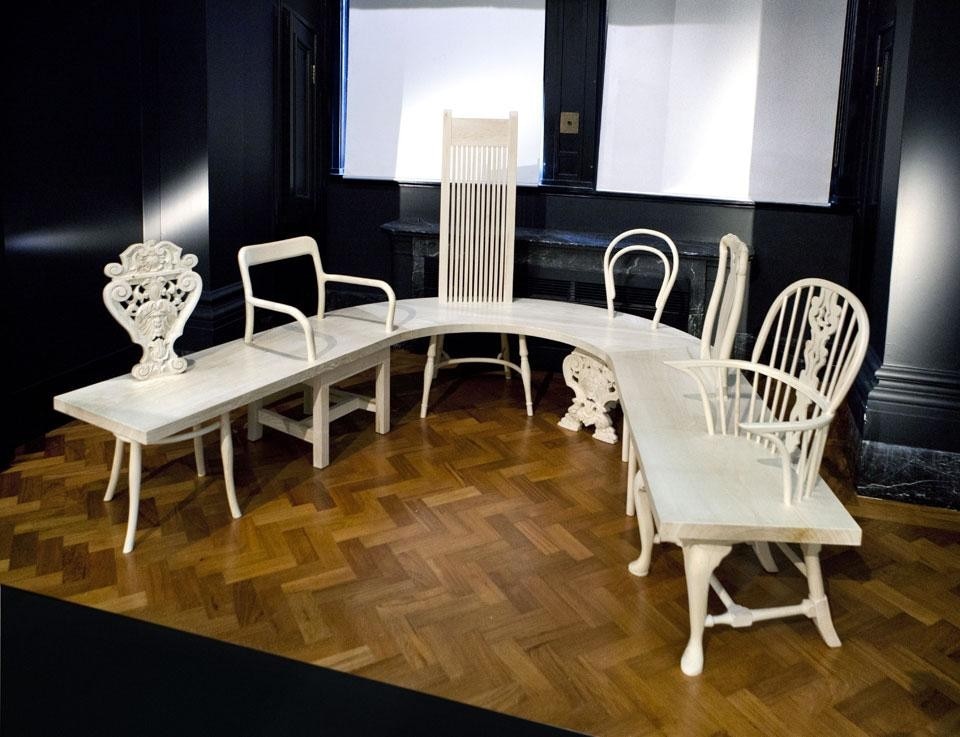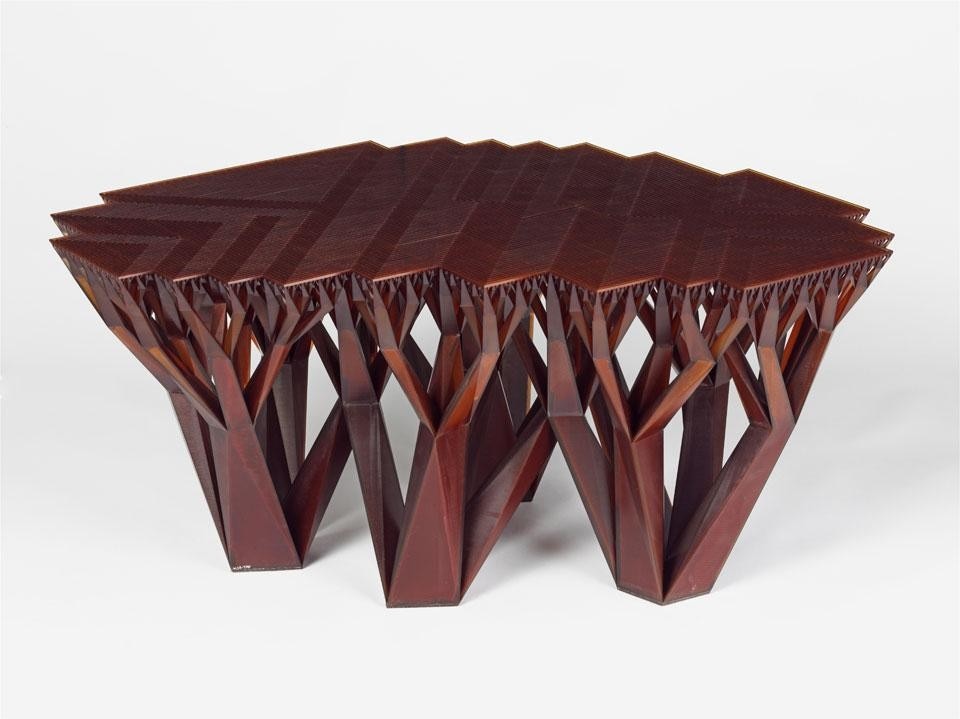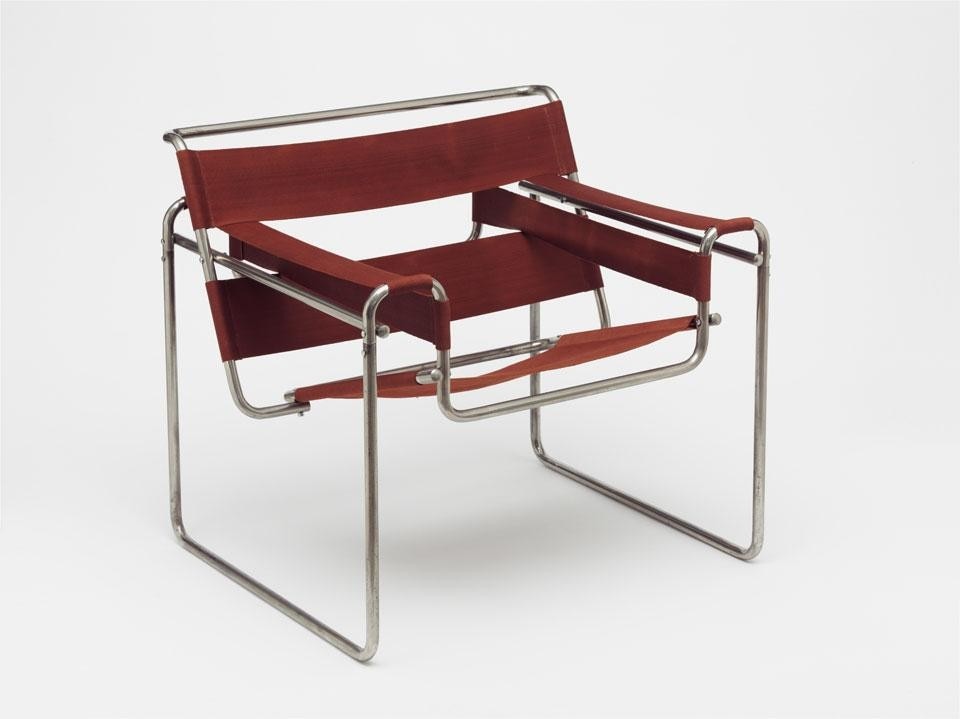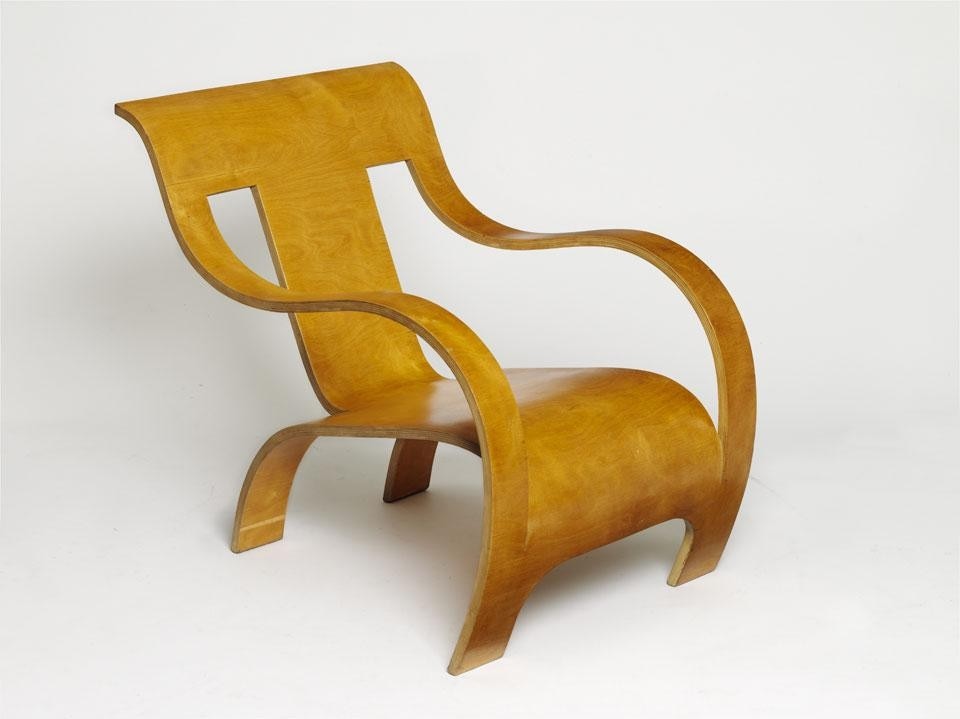Named after Dr Susan Weber, the founding director of New York's Bard Graduate Center, the gallery has been curated by Nick Humphrey and Leela Meinertas, both long-time V&A furniture specialists. Tucked up on the Museum's sixth floor, it is part of the transformation of the V&A's displays under its FuturePlan programme. Overseeing its design was Glasgow-based practice NORD Architecture: they have created an airy, light-filled space, whose palette of dark wood and white walls discretely frames the diverse mix of materials, techniques, styles and object types on show.
The gallery is divided into three main displays. The central aisle consists of twenty-five chronologically ordered examples of basic furniture typologies — albeit rather extravagant versions of these, if Boris Dennler's Wooden Heap stacked wood drawers from 2012 and John Henry Belter's 1856 elaborately carved sofa are anything to go by. Their position in the gallery's middle enables them to be seen in the round, exposing aspects intended to be unseen but which reveal how such forms were achieved — like the distinctively unglamorous plywood-like construction that made Belter's showmanship possible.
1.jpg.foto.rmedium.jpg)
1.jpg.foto.rmedium.jpg)
Focusing on any one aspect is never going to tell all of an object's story, yet technique is a highly useful perspective for understanding furniture, one that will continue to be relevant for years to come

1.jpg.foto.rmedium.jpg)
1.jpg.foto.rmedium.jpg)





3.jpg.foto.rmedium.jpg)